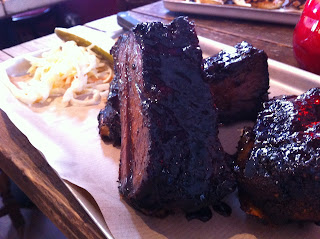I'm seeing a shift, the community management industry - it's leaving its puppy pen and has reached adolescence. Over the past few years, only a small number of companies have invested in their own social departments, choosing to outsource their community actives to agencies. Now, as brands and companies identify that full integration between Social and existing Comms teams is essential, they're putting out their feelers to find their Mr (or Ms) Right in Community Management. Just looking at the #cmgr hash tag on twitter you'll see there is an increasing need for in-house CMs.
For the past few months I've been leading the community effort over at The Social Practice, helping to build the team to support our clients requirements. As a result, I've met a lot of Community Managers, some excellent, and some down right awful. I currently work with a selection of CMs that have a wide variety of skill sets, and knowing the clients I work with, I partner these together with the right brands. It's not easy and I've been working in Community Management for years! So I thought it would be useful to outline some things you should be looking for to find the right Community Manager for you and your brand.
Do you like the way they communicate?
Resource is often stretched to manage multiple clients agency side so bringing your social in-house you'll now have someone fully committed to building and creating relationships for your brand. For this reason, it's important that who you choose has strong communication skills both on and offline. This means, they have to communicate on your level as you're essentially asking them to represent your brand both on and offline.
Can they create engaging content?
A huge part of your Community Managers role will be to generate and implement engaging content around your comms strategy. This not only means having an eye for a good picture, but also being able to craft an update in only 140 characters with a clear call to action inline with your social KPIs and objectives.
Do they know your brand?
Yes you want someone who lives, breathes and eats your brand… but you won't always get that. You will however find wonderfully prepared Community Managers who have done their research and really know your brand history, ethos and want to be passionate about your products.
The Top 5 Things Your Community Manager Needs:
- Passion and enthusiasm, not just of your brand but of community management and social activity online.
- Connections, or the ability to be versatile enough to make new ones easily within your sector.
- Ability to create good quality, relevant content under pressure.
- To be brave, confident and likeable.
- Have a solid understanding of behaviour on the social channels you'll be requiring them to work on.
I'd strong recommend that you set your CM a task to do in a set amount of time to test all of the above. Never underestimate the affect a little bit of stress can have on the out put of a CM.
Best of luck with your search!












